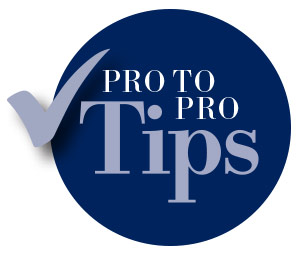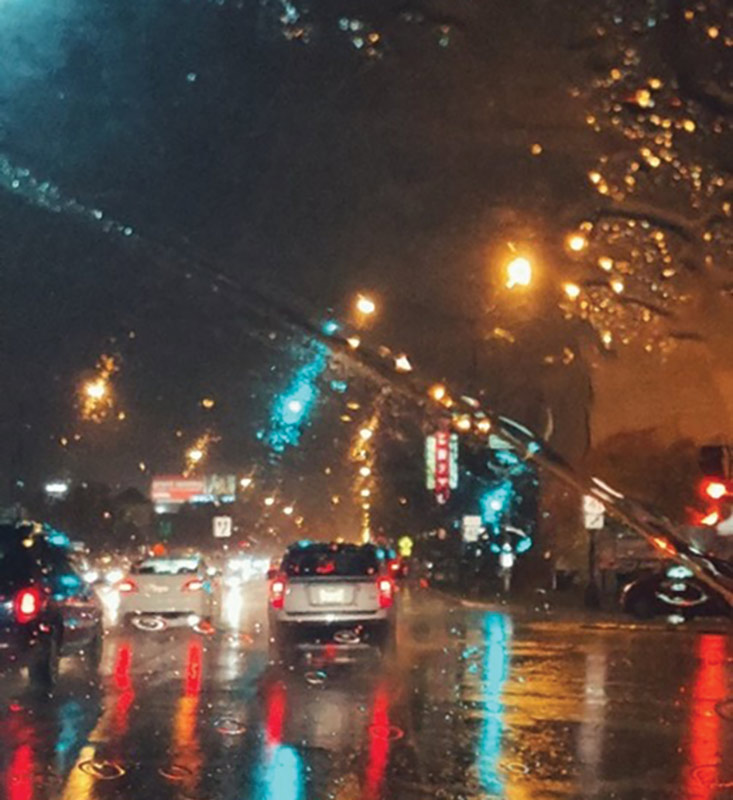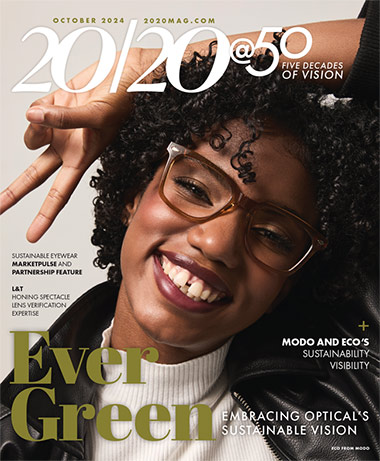
By Linda Conlin, ABOC, NCLEC

Night vision, or scotopic vision, is the ability to see in low light conditions. Humans have poor night vision compared to many animals, such as cats, foxes and rabbits, in part because the human eye lacks a tissue behind the retina that reflects light back through the retina, increasing the light available to the photoreceptors. The tissue is called tapetum lucidum, which is why your pet’s eyes seem to glow in photographs. Of the two types of photoreceptor cells in the human retina, rods and cones, rods dominate scotopic vision. The rods have poor acuity and are slow to respond, providing poor input to reaction time.
In low light conditions, the pupil dilates, which allows more peripheral unfocused light rays to enter the eye. This unfocused light makes it harder to see clearly. Combine that with slow rod response, and a task like night driving becomes more difficult when the driver wears corrective lenses that result in reflections. Then there’s the intense glare induced from bright blue LED headlight lamps. Moreover, age-induced eye changes reduce light transmission to the retina while increasing scatter, blur and glare. It’s no wonder that a disproportionate number of fatal road injuries occur after nightfall, making drivers rightfully wary of driving in lowlight conditions. As reported in “Injury Stats,” “While we do only one-quarter of our driving at night, 50 percent of traffic deaths happen at night. It doesn’t matter whether the road is familiar or not; driving at night is always more dangerous.”
Tip: Be sure the patient history includes a question about night vision or night driving. Patients may think difficulty driving at night is normal and neglect to mention it, but there are solutions to improve night vision when wearing glasses. Read on to learn what they are.
First, ensure patients get their yearly comprehensive eye exam and fill their prescriptions. Even a small amount of refractive error correction can greatly impact night vision.
Many people who think their vision is fine are surprised to discover how much better they can see at night with new glasses. But because corrective lenses have internal and surface reflections causing discomfort glare, it is essential that every pair of glasses has an anti-reflective coating. Recently AR coatings and specialty lenses have come on the market designed specifically for improved vision while driving. Some are designed for driving at night and others for daytime driving; most claim to improve both day and night driving. Anti-reflective coating reduces surface and internal lens reflections, and the resulting halos, ghost images and glare experienced when driving at night. A short wavelength blue filter in the coating can reduce discomfort glare from blue-rich headlights. Helping patients reduce discomfort glare from their glasses when driving at night will increase night driving confidence, comfort and safety for the eyeglass wearer, including PAL wearers.
Tip: Without AR coating, vision is impaired when driving at night due to internal lens reflections from cars and streetlights that result in glare and halos or ghosting around lights. AR improves night vision for the eyeglass wearer by minimizing glare and ghost images from lens reflections.
Night myopia is not related to refractive error. It is a condition that occurs for a large percentage of the population when driving at night and results in defocus in the distance, eyestrain and visual fatigue. Low light makes it difficult for the eyes to focus properly, and the increased pupil size during dark conditions allows more peripheral unfocused light rays to enter the eye. With a larger pupil size, an increase in the eye’s high-order aberrations (HOA) reduces the retinal image’s contrast. It changes the effective refractive error so that a different set of correcting dioptric lens powers are needed from the ones measured when the pupil is small.
Tip: Compensated progressive and single vision lens designs that compensate for the larger pupil sizes in mesopic (low light) and scotopic conditions improve contrast and acuity for more comfortable night driving.
Night driving places the greatest demand on night vision. The three major visual challenges for night driving are reduced visibility in low light conditions, discomfort glare induced by modern high-intensity headlights and visual stress due to the complexity of dynamic vision while driving (focus on the road ahead, viewing the dashboard and alternate viewing dynamically between several rear-view mirrors). The effect of increased driver visual attention load is longer reaction times. In stressful conditions of poor visibility, reaction times increase, and the time spent changing fixation becomes even more critical. Reaction time is integrally linked to good vision and is crucial for safety. For the eyeglass wearer, lenses with AR coating improve vision while driving, including nighttime driving. New lenses are being produced specifically to aid in day and night going for the eyeglass wearer. It’s up to ECPs to be informed of the available driving lens options and recommend lens and AR solutions that improve night vision comfort and safety when driving.












